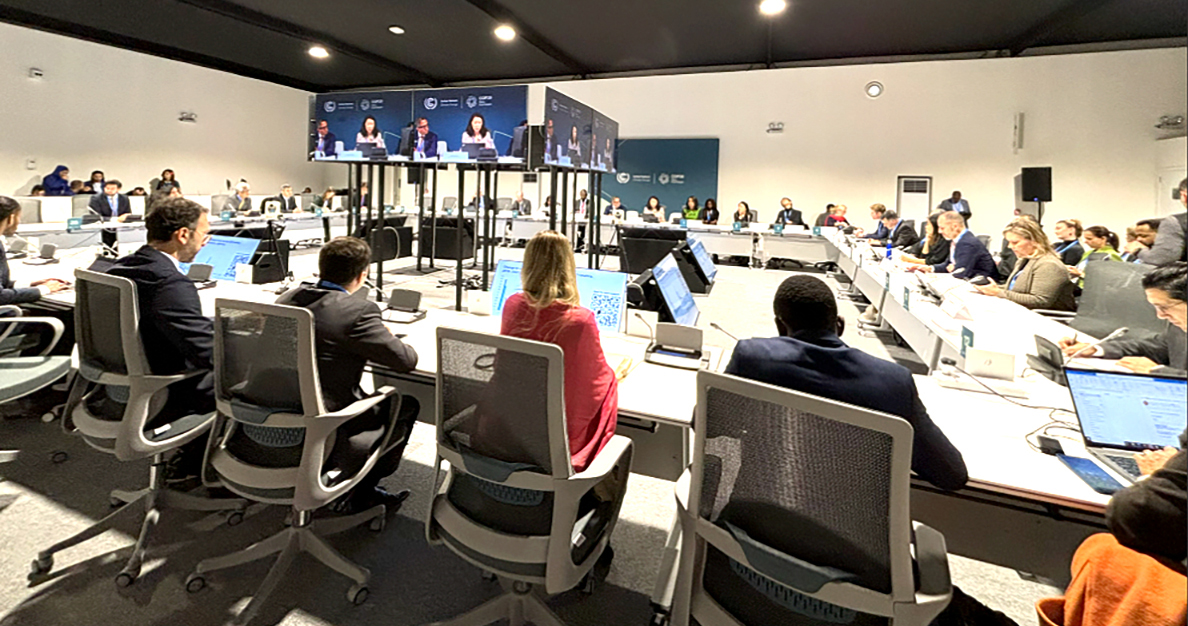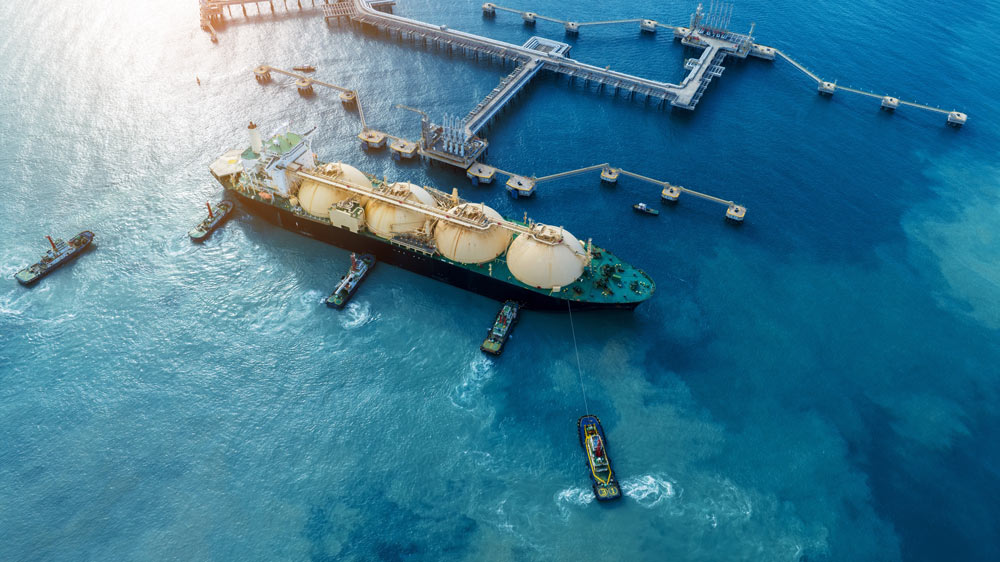Guy Turner, Head of Carbon Markets, MSCI | Juana Hernandez, VP, Carbon Markets Policy, MSCI
Linda-Eling Lee, Founding Director, MSCI Institute
Download the recommendations [PDF]
1. Introduction
The MSCI Institute assembled a group of more than 50 experts from over 25 countries at New York Climate Week in September to discuss how private finance can support international emissions markets under Article 6 of the Paris Agreement. This report presents recommendations from the forum that could help inform negotiations on Article 6 at the U.N. COP30 summit in Brazil this November.[1]
The forum comprised three sessions representing the interests of buyers of Article 6 credits, sellers of such credits (as well as project developers), and market intermediaries, which included governments, financial institutions, traders, exchanges, verifiers and consultants. Each group was asked to explore barriers to expanding Article 6 markets and how to increase the role of private finance. A plenary session brought together the recommendations from these groups for wider discussion.
Article 6 Finance Forum: Recommendations
The points below summarize recommendations for expanding the role of private finance in emissions trading under Article 6 of the Paris Agreement from institutional buyers and sellers of carbon credits, project developers and financial intermediaries convened by the MSCI Institute and J.P. Morgan at New York Climate Week in September.
1. Send clear signals on purchasing commitments.
- More high-emitting countries should commit to accessing international emissions markets as a way of achieving their Paris goals.
- Countries with emissions trading systems or carbon taxes should consider allowing covered companies to access international Article 6 markets.
- By implementing CORSIA for airlines in their jurisdictions, governments can provide clarity on fines for non-compliance.
2. Standardize national approaches.
- Standardize principles across jurisdictions, project types and contracts to lower implementation costs, scale participation and attract private finance.
- Align members of regional coalitions to develop policies and incentives that support business needs.
3. Accelerate institutional capacity in seller countries.
- Leverage existing registry and exchange infrastructure, and draw on capacity support from development finance institutions such as the World Bank and others.
- Key capacity needs include deciding which project types and credit volumes to authorize, setting up national registries and rules for measurement, reporting and verification; and ensuring accurate application of corresponding adjustments.
- Independent analytical tools can help compare countries’ investment attractiveness and risk profiles when undertaking Article 6 transactions.
4. Strengthen the regulatory environment in seller countries.
- Governments in seller countries could establish frameworks that commit the country over multiple years to implementing the measures agreed under Article 6 transactions.
- Development finance institutions could create more innovative financial solutions to manage political risks.
5. Build confidence through integrity and positive communication.
- Recognize the opportunity for carbon cutting and investment in adaptation that emissions trading under Article 6 represents.
- Governments and institutions should demonstrate consistent commitment to high-integrity standards, transparent authorization processes, and credible monitoring systems that assure investors of stability and that their capital contributes to genuine climate outcomes.
2. Background
International emissions trading under Article 6 can support ambitious climate action. The mechanisms of Articles 6.2 and 6.4 of the Paris Agreement describe how the international transfer of emissions reductions should take place while maintaining the integrity of accounting for global greenhouse gas emissions.
Article 6 of the Paris Agreement establishes two sets of rules for carbon trading:
- Article 6.2 provides accounting and reporting guidance on international trading of mitigation outcomes. Governments can sign bilateral agreements agreeing to authorize transfers between their countries or to corporates. Authorization means that a country has committed to making what’s known as a corresponding adjustment (CA).
- Article 6.4 sets a U.N. carbon-credit standard at the project level, similar to the clean-development mechanism established by the Kyoto Protocol. Article 6.4 is designed to create a centralized means to channel resources to climate projects around the world. Carbon credits issued under 6.4. can be bought by countries or companies and, if retired for voluntary purposes, do not require a corresponding adjustment. While a lot of progress has been made, 6.4 is not yet fully operational.
According to research by MSCI Carbon Markets, transactions supported by Article 6 could fuel half of global demand for carbon credits up to 2040. These include government-to-government transfers, airlines under the international aviation scheme CORSIA and corporate-level trading schemes requiring credits compliant with Article 6.
While the foundations for such trading are starting to fall into place — over 30 bilateral implementing agreements have been signed under Article 6 — only a handful of transactions have actually occurred to date.[2] Much of the interest has centered on Article 6.2 transactions, involving agreements between governments with relatively little involvement of private sector finance.
Article 6 underpins a potentially meaningful source of finance to support climate action but governments have yet to tap into the role the private sector can play.
Potential future carbon credit demand – medium scenario (MtCO2)
Source: MSCI Carbon Markets, data as of Sept. 30, 2025.
3. Recommendations
Realizing the promise of Article 6 will require countries to coordinate efforts that scale action and attract investment from both the public and private sectors. Encouraging greater use of private capital will require a focus on reducing risk, or at least clarifying the types of risk involved. Risks can often be managed and mitigated if clearly understood by all parties.
Send clear signals on purchasing commitments
With the exception of airlines under CORSIA, much of the demand for Article 6 credits will be backed by governments, either as buyers of credits or through regulations that encourage corporates to buy Article 6-compliant credits. Clear commitment and demand from governments are essential.
More high-emitting countries should consider commit to accessing international emissions markets as a way of achieving their Paris goals.
The forum noted that demand for Article 6 credits remains concentrated, with only a handful of governments actively purchasing carbon credits. This concentration risks inefficiency and falls short of what is needed to scale the Article 6 market globally. At the same time, high-emitting countries, particularly in the developed world, face growing challenges in meeting ambitious decarbonization goals at costs acceptable to their citizens. International carbon trading lowers the cost of decarbonization, underscoring the value of including Article 6 purchasing targets in country climate goals communicated through nationally determined contributions (NDCs).
Countries with emissions trading systems or carbon taxes should consider allowing covered companies to access international Article 6 markets.
According to MSCI’s analysis, more than 15 countries now have domestic regulations allowing the use of carbon credits to meet compliance targets or offset carbon taxes. Eligibility requirements vary by national priorities. Allowing access to international emission markets — subject to rules ensuring high integrity — would enable covered entities to access the lowest-cost emissions reductions.
By implementing CORSIA for airlines in their jurisdictions, governments can provide clarity on fines for non-compliance.
As the most developed compliance framework for international emissions trading, CORSIA could serve as a bridge to a fully functioning Article 6 market. Participation remains limited, however, and government enforcement uneven. Broader enforcement is needed for CORSIA to drive compliance-based demand.
Standardize national approaches
The forum noted significant inefficiencies in how Article 6 projects are currently structured and financed, as “every deal is different.” Greater standardization across project types and contract structures would improve economies of scale, lower implementation costs and attract more private finance.
The wide range of approaches to Article 6.2 and 6.4 projects hamper access to equity and debt markets, which require scale to operate effectively. Shared principles — such as those agreed to by Kenya, Singapore and the U.K. or the Core Carbon Principles developed by the Integrity Council for the Voluntary Carbon Market — can provide consistency across jurisdictions, giving businesses greater clarity from governments on the use of carbon credits as part of corporate decarbonization plans.
Transparency in pricing and standardized fee structures are similarly important. Regional coalitions such as the Association of Southeast Asian Nations (ASEAN), the West African Carbon Market Alliance and the East African Carbon Market Alliance can play a pivotal role in aligning members to develop policies and incentives that better respond to business needs.
Accelerate institutional capacity in seller countries
The forum noted that countries intending to supply Article 6 credits often lack the capacity to effectively engage in transactions under the mechanism’s rules. Key areas requiring attention include establishing national registries, designing effective measurement and verification, and guaranteeing that corresponding adjustments (CAs), which confirm that emissions reductions or removals traded through Article 6 are counted toward a single target, are applied correctly.
Seller countries must also determine which project types to authorize for CAs and the quantity of credits to allocate. Economic theory suggests that countries should reserve the lowest-cost emissions reductions to meet their own NDCs. The forum noted, however, that excluding such projects from the Article 6 transactions risks slowing market development and frustrating buyers, such as those participating in CORSIA Phase I.
Weak institutional systems in seller countries create uncertainty, while sudden policy shifts can undermine financial models even after deals are negotiated, reducing countries’ attractiveness for private capital.
Although these issues present challenges for seller-country governments, the forum noted that a number of solutions and sources of support are already available, including:
- Existing infrastructure for registries and exchanges, as well as capacity-building initiatives that draw on the work of organizations such as the World Bank, the Voluntary Carbon Markets Integrity Initiative, the World Wide Fund for Nature, the UN Framework Convention on Climate Change and others.
- Independent analytical tools can help compare countries’ investment attractiveness and risk profiles when undertaking Article 6 transactions. These include MSCI’s Article 6 readiness assessment, which measures a country’s ability to implement the CA process.
Strengthen the regulatory environment in seller countries to attract long-term capital
Private-sector investors often weigh carbon market opportunities against other investments and generally seek stable, long-term returns. Yet Article 6 transactions can run for 10-30 years, making them politically sensitive and dependent on sovereign commitments that many governments are reluctant to make. Beyond high costs, these transactions carry multiple layers of risk, from project-specific challenges to shifts in national climate ambition or even the revocation of prior authorizations.
Governments in seller countries could establish frameworks that commit the country over multiple years to implementing the measures agreed under Article 6 transactions.
Seller governments play a central role in creating the investment environment needed to attract private capital for Article 6 transactions, and all forms of long-term commitments should be explored. Countries doing so are already seeing the benefits. Ghana has attracted over USD 1 billion in foreign direct investment within two years of establishing its domestic policy framework for Article 6 trading.[3]
As with efforts to strengthen institutional capacity, a range of solutions are already available or are being developed to reduce the risks associated with political or regulatory change. These include varied forms of insurance, such as the World Bank’s Multilateral Investment Guarantee Agency, private-sector insurance solutions and government-backed export credit guarantees.
Greater standardization of project types and methodologies, as noted earlier, should also enable insurers to underwrite risks more effectively compared with the current need to assess each project individually. This, in turn, could expand the range of insurance solutions available through partnerships between specialist underwriters and mainstream insurance groups.
While the market remains young and largely untested by large-scale claims, the presence of insurance coverage is increasingly viewed by some buyers as a sign of project credibility, particularly for higher-value, engineered-removal transactions.
Standardization also supports greater market liquidity. Collateralization could turn Article 6 credits into tradeable securities, drawing on lessons from commodities markets, where warehouse-style systems enhanced fungibility.
Development finance institutions (DFIs) could create more innovative financial solutions to manage political risks.
DFIs have the scale and skills to support Article 6 transactions in a number of ways. One option is to create market tools, such as floor prices, that provide investors with downside protection over long-term horizons.
Build confidence through integrity and positive communication
The forum agreed that scaling the Article 6 market will require building confidence among investors and other stakeholders. While participants often highlight constraints when evaluating projects, it is equally important to recognize the market’s growing integrity and the broader development gains these investments deliver. Retirements of credits rated BBB and above by MSCI Carbon Markets have risen to over 35% in the first half of 2025, up from 25% in 2022, according to the firm’s latest data. Sustained attention to high integrity can support a stronger focus on growth opportunities.
As COP30 approaches, the forum calls on leaders to recognize the opportunity for carbon cutting and investment in adaptation that emissions trading under Article 6 represents. Scaling international carbon markets will demand action and cooperation. Emissions trading under Article 6 has the potential to lower the cost of decarbonization in the biggest economies while helping developing countries secure the private-sector finance needed to support their energy transition and increase climate adaptation efforts.
Governments and institutions should demonstrate consistent commitment to high-integrity standards, transparent authorization processes and credible monitoring systems that assure investors of stability and that their capital contributes to genuine climate outcomes. These steps can transform confidence into sustained investment, turning Article 6 from a technical framework into a trusted global market instrument.
References
[1] Key objectives for COP30 include harmonization of carbon markets. See, “Fourth Letter from the Presidency,” COP30 Brazil, June 20, 2025.
[2] Source: MSCI Carbon Markets
[3] “From Principles to Practice: Operationalization of a Global Carbon Market under Article 6,” The Oxford Institute for Energy Studies, October 2025.


